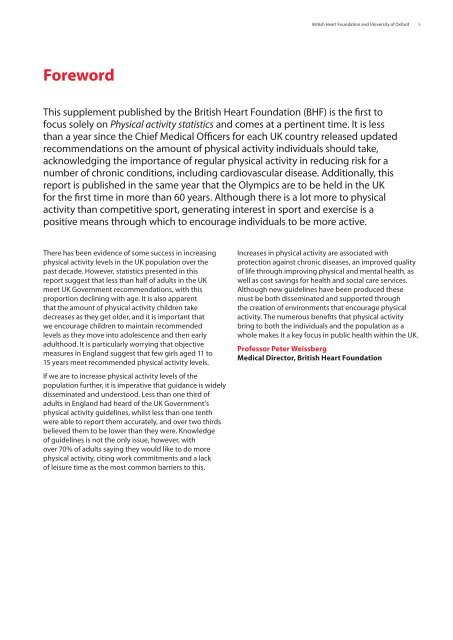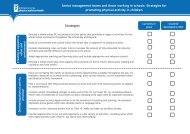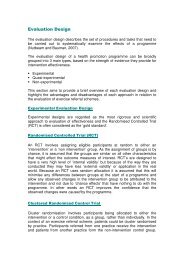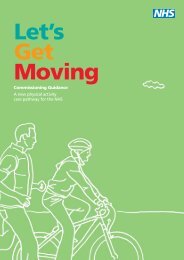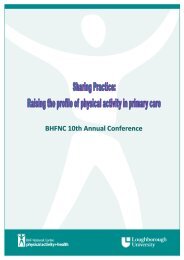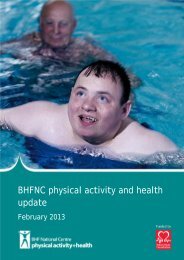Physical activity statistics 2012 - British Heart Foundation
Physical activity statistics 2012 - British Heart Foundation
Physical activity statistics 2012 - British Heart Foundation
- No tags were found...
Create successful ePaper yourself
Turn your PDF publications into a flip-book with our unique Google optimized e-Paper software.
<strong>British</strong> <strong>Heart</strong> <strong>Foundation</strong> and University of Oxford 5ForewordThis supplement published by the <strong>British</strong> <strong>Heart</strong> <strong>Foundation</strong> (BHF) is the first tofocus solely on <strong>Physical</strong> <strong>activity</strong> <strong>statistics</strong> and comes at a pertinent time. It is lessthan a year since the Chief Medical Officers for each UK country released updatedrecommendations on the amount of physical <strong>activity</strong> individuals should take,acknowledging the importance of regular physical <strong>activity</strong> in reducing risk for anumber of chronic conditions, including cardiovascular disease. Additionally, thisreport is published in the same year that the Olympics are to be held in the UKfor the first time in more than 60 years. Although there is a lot more to physical<strong>activity</strong> than competitive sport, generating interest in sport and exercise is apositive means through which to encourage individuals to be more active.There has been evidence of some success in increasingphysical <strong>activity</strong> levels in the UK population over thepast decade. However, <strong>statistics</strong> presented in thisreport suggest that less than half of adults in the UKmeet UK Government recommendations, with thisproportion declining with age. It is also apparentthat the amount of physical <strong>activity</strong> children takedecreases as they get older, and it is important thatwe encourage children to maintain recommendedlevels as they move into adolescence and then earlyadulthood. It is particularly worrying that objectivemeasures in England suggest that few girls aged 11 to15 years meet recommended physical <strong>activity</strong> levels.If we are to increase physical <strong>activity</strong> levels of thepopulation further, it is imperative that guidance is widelydisseminated and understood. Less than one third ofadults in England had heard of the UK Government’sphysical <strong>activity</strong> guidelines, whilst less than one tenthwere able to report them accurately, and over two thirdsbelieved them to be lower than they were. Knowledgeof guidelines is not the only issue, however, withover 70% of adults saying they would like to do morephysical <strong>activity</strong>, citing work commitments and a lackof leisure time as the most common barriers to this.Increases in physical <strong>activity</strong> are associated withprotection against chronic diseases, an improved qualityof life through improving physical and mental health, aswell as cost savings for health and social care services.Although new guidelines have been produced thesemust be both disseminated and supported throughthe creation of environments that encourage physical<strong>activity</strong>. The numerous benefits that physical <strong>activity</strong>bring to both the individuals and the population as awhole makes it a key focus in public health within the UK.Professor Peter WeissbergMedical Director, <strong>British</strong> <strong>Heart</strong> <strong>Foundation</strong>


